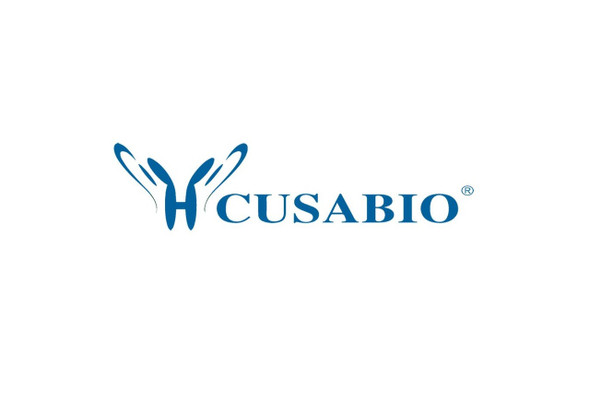Cusabio Human Recombinants
Recombinant Human Ubiquitin-conjugating enzyme E2 S (UBE2S) | CSB-EP623095HU
- SKU:
- CSB-EP623095HU
- Availability:
- 13 - 23 Working Days
Description
Recombinant Human Ubiquitin-conjugating enzyme E2 S (UBE2S) | CSB-EP623095HU | Cusabio
Alternative Name(s): E2 ubiquitin-conjugating enzyme S E2-EPF Ubiquitin carrier protein S Ubiquitin-conjugating enzyme E2-24KDA Ubiquitin-conjugating enzyme E2-EPF5 Ubiquitin-protein ligase S
Gene Names: UBE2S
Research Areas: Epigenetics and Nuclear Signaling
Organism: Homo sapiens (Human)
AA Sequence: MNSNVENLPPHIIRLVYKEVTTLTADPPDGIKVFPNEEDLTDLQVTIEGPEGTPYAGGLFRMKLLLGKDFPASPPKGYFLTKIFHPNVGANGEICVNVLKRDWTAELGIRHVLLTIKCLLIHPNPESALNEEAGRLLLENYEEYAARARLLTEIHGGAGGPSGRAEAGRALASGTEASSTDPGAPGGPGGAEGPMAKKHAGERDKKLAAKKKTDKKRALRRL
Source: E.coli
Tag Info: N-terminal GST-tagged
Expression Region: 1-222aa
Sequence Info: Full Length
MW: 50.8 kDa
Purity: Greater than 90% as determined by SDS-PAGE.
Relevance: Accepts ubiquitin from the E1 complex and catalyzes its covalent attachment to other proteins. Catalyzes 'Lys-11'-linked polyubiquitination. Acts as an essential factor of the anaphase promoting complex/cyclosome (APC/C), a cell cycle-regulated ubiquitin ligase that controls progression through mitosis. Acts by specifically elongating 'Lys-11'-linked polyubiquitin chains initiated by the E2 enzyme UBE2C/UBCH10 on APC/C substrates, enhancing the degradation of APC/C substrates by the proteasome and promoting mitotic exit. Also acts by elongating ubiquitin chains initiated by the E2 enzyme UBE2D1/UBCH5 in vitro; it is however unclear whether UBE2D1/UBCH5 acts as an E2 enzyme for the APC/C in vivo. Also involved in ubiquitination and subsequent degradation of VHL, resulting in an accumulation of HIF1A. In vitro able to promote polyubiquitination using all 7 ubiquitin Lys residues, except 'Lys-48'-linked polyubiquitination.
Reference: "E2-EPF UCP targets pVHL for degradation and associates with tumor growth and metastasis." Jung C.R., Hwang K.S., Yoo J., Cho W.K., Kim J.M., Kim W.H., Im D.S. Nat. Med. 12:809-816(2006)
Storage: The shelf life is related to many factors, storage state, buffer ingredients, storage temperature and the stability of the protein itself. Generally, the shelf life of liquid form is 6 months at -20?/-80?. The shelf life of lyophilized form is 12 months at -20?/-80?.
Notes: Repeated freezing and thawing is not recommended. Store working aliquots at 4? for up to one week.
Function: Accepts ubiquitin from the E1 complex and catalyzes its covalent attachment to other proteins
Involvement in disease:
Subcellular Location:
Protein Families: Ubiquitin-conjugating enzyme family
Tissue Specificity:
Paythway: Ubiquitinmediatedproteolysis
Form: Liquid or Lyophilized powder
Buffer: If the delivery form is liquid, the default storage buffer is Tris/PBS-based buffer, 5%-50% glycerol. If the delivery form is lyophilized powder, the buffer before lyophilization is Tris/PBS-based buffer, 6% Trehalose, pH 8.0.
Reconstitution: We recommend that this vial be briefly centrifuged prior to opening to bring the contents to the bottom. Please reconstitute protein in deionized sterile water to a concentration of 0.1-1.0 mg/mL.We recommend to add 5-50% of glycerol (final concentration) and aliquot for long-term storage at -20?/-80?. Our default final concentration of glycerol is 50%. Customers could use it as reference.
Uniprot ID: Q16763
HGNC Database Link: HGNC
UniGene Database Link: UniGene
KEGG Database Link: KEGG
STRING Database Link: STRING
OMIM Database Link: OMIM









